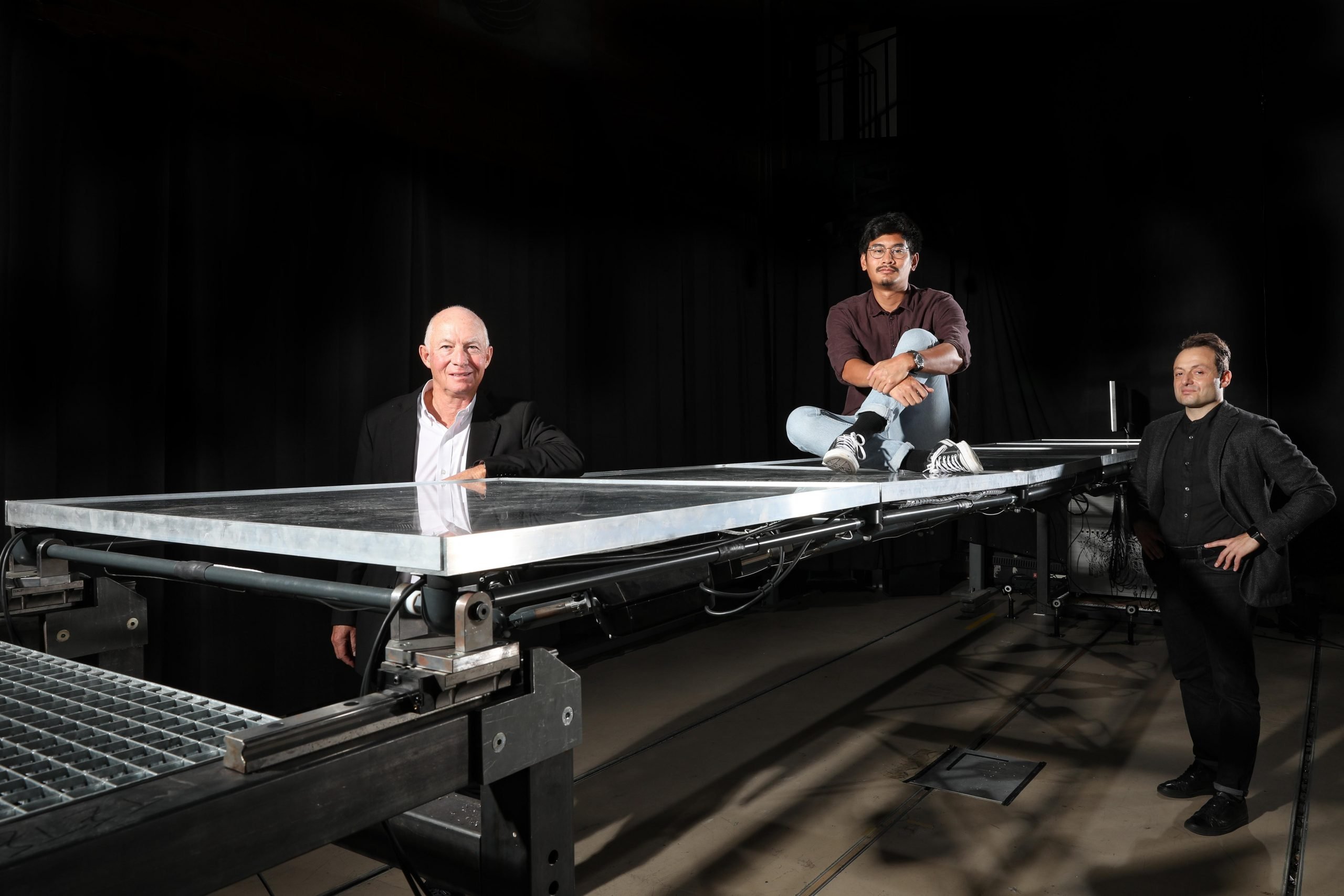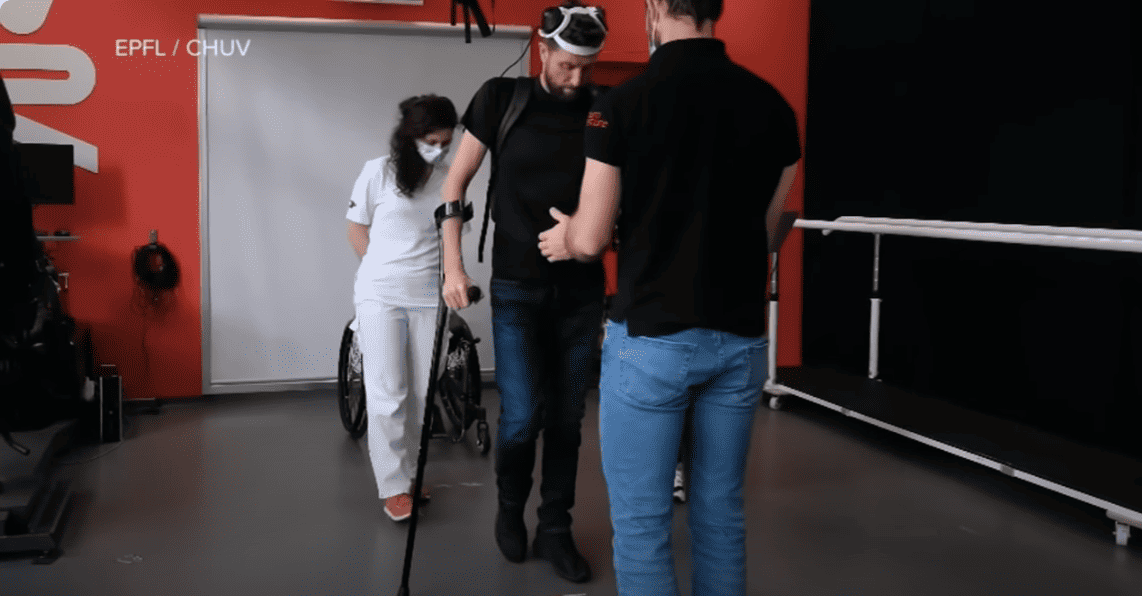
A man walks over a suspension bridge. Once he is standing on the middle of the bridge, someone else comes walking over from the other side. From afar you can see that the lower structure of the bridge moves and changes shape.
Construction elements that adapt to ever-changing circumstances fall under the heading of ‘adaptive structures.’ This form of architecture is becoming more and more fashionable now that the construction industry is under pressure to do something to unburden the environment. The industry is looking for new ways of construction to meet increasingly stringent environmental standards.
Adaptive structures are structures that are capable of actively absorbing the load on them by using e.g. sensors, and actuators. These send information to a control terminal.
Structures are built to withstand extreme situations (crowds, extreme wind, and other natural conditions), although these rarely occur.
The pedestrian bridge (6.6 meters in length, 1 meter wide, 16 centimeters deep in a stationary state) is not located outdoors. It is actually in a test facility located in a room at the Applied Computer and Mechanics Laboratory (IMAC), part of the École Polytechnique Fédérale de Lausanne (French-language Technical University of Lausanne, Switzerland). The aim of this design is to demonstrate that a structure can be designed in such a way that if the load rises above a certain value, the structure automatically adapts to that by changing its shape.

The idea behind it is that structures are built to withstand extreme situations (crowds, extreme wind, and other natural conditions), although these rarely occur. The prototype is a successful mix of engineering and control technology, as demonstrated by one of the researchers in this short video. In the video, which IMAC presented this week, the researchers show how the principle works.
Sensors and actuators
The walkway incorporates a control system consisting of sensors and actuators, hydro- and electrical devices. Each element of the structure is equipped with a stress sensor. In addition, the movement of the structure is always monitored by an optical tracking system. Machine learning has also been integrated to improve accuracy. The control units process the information they receive from the sensors in real-time. They also control the actuators to ensure that the structure either expands or shrinks, depending on the stress on the structure.
If this form of ‘adaptive’ construction is used on a large scale in the design and construction of structures (single sections, buildings), a lot less building material will be needed. The conventional design of structures ensures that the strength and deformation of the structures meet the stipulated limits in order to be able to cope with the heaviest loads.
Construction industry is a major consumer of raw materials
The construction sector is the largest consumer of raw materials and accounts for more than one-third of global energy demands. Once built, buildings and other structures remain environmentally unfriendly. They are responsible for up to 50 percent of total CO2 emissions during their lifespan.








